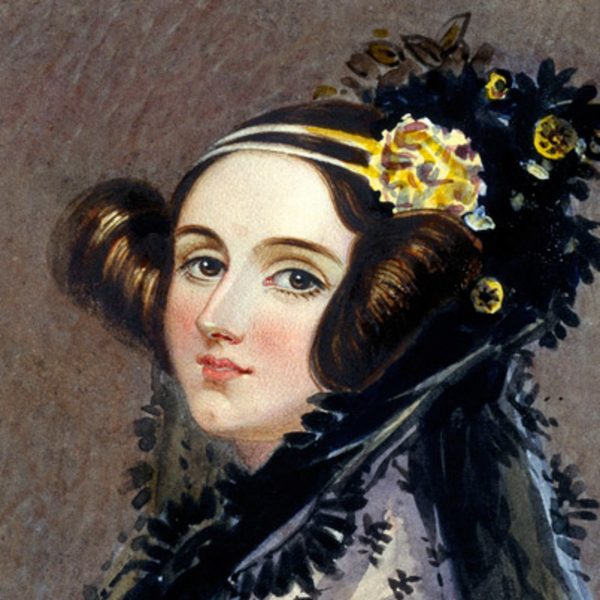The gender gap in STEM related fields (Science, Technology, Engineering and Maths) persists all over the world and there are some countries where it is really significant. On February 11 we celebrate International Day of Women and Girls in Science, a day that was proclaimed by the United Nations General Assembly in 2015 to fight for an equal access to STEM careers and to promote gender equality through women’s participation in science and technology.
Throughout human history, there have been a lot of women who have contributed to different scientific and technology developments. In many cases, their work have been made invisible for years, even though their discoveries have led us to where we are today. Today we want you to get to know six of the most important women for IT and their work during the 19th and the 20th centuries.
Ada Lovelace
Let’s start from the beginning , which leads us to Ada Lovelace. Ada Byron or Ada Lovelace (1815-1852) was the first computer programmer in history, since she was the first person to introduce an algorithm into a machine – which was equivalent to a modern computer. That machine, which was designed by an English mathematician called Charles Babbage, was an analytical machine that had been built exclusively to do mathematical calculations. It was Ada Lovelace who realized that it could also be used for many other operations and she was the one introducing encrypted information into it.
This happened in the mid-nineteenth century. In fact, the whole Ada Lovelace’s story breaks with gender stereotypes: her father loved literature and poetry, while her mother was passionate about maths. As her mother wanted to take her away from her father and all his preferences, she ensured that Ada Lovelace would get the best education in Science and Mathematics. Certainly all this education bore fruit and we all owe her a lot.
Henrietta Swan Leavitt
Let’s skip now some years and reach the second half of the 19th century. It’s time to talk about Henrietta Swan Leavitt (1986-1921), who was part of “The Harvard Computers”, a group of more than a hundred women that worked as calculators at the Harvard Observatory by observing stars through glass photos. Unfortunately, many of these women’s names are still unknown, but we can assure that one of the most distinguished ones was Henrietta Swan Leavitt.
Through the study of certain glass plates, the astronomer Swan Levitt got to calculate a distance in space. Thanks to this breakthrough, a new distance scale was established and this made possible to start measuring the universe. Some years later, these calculations helped the astronomer Edwin Hubble discovering there were other galaxies beyond ours and some of those same calculations made possible Albert Einstein’s work on the general theory of relativity.
Grace Murray Hopper
We’re now on the 1940s. Grace Hopper (1906-1992) was one of the pioneers in computer science. We are talking about one of the first programmers of Mark I, an electromechanical computer built in Harvard which was based on the analytical machine of Charles Babbage, that same machine designed to do mathematical calculations involved in Ada Lovelace’s history.
Grace Hopper is especially known for being the creator of the first language compiler, something similar to a translator between human languages and programming languages, which led to the development of COBOL, a programming language designed to be used in any kind of computer. That programming language was not only universal but it didn’t require people to have specific knowledge in order to use it thanks to its high level of compilation: it used a syntax that was really similar to English instead of using symbols more commonly used in programming languages.
Hedy Lamarr
Hedy Kiesler Markey (1914-2000) was known as a successful actress but she was also a great inventor whom we should be thanking for inventions such as Wi-Fi. Lamarr was one of the inventors of what is called the frequency-hopping spread spectrum technology, a system used to codify transmissions.
Although its inventors proposed this technique to the United States government during the Second World War, it was not used until the 60s – also for military uses, in order to intercept communications and detect torpedoes. Amongst its subsequent uses we must outline GPS systems, transmissions between the Earth and space vehicles and our beloved Wi-Fi.
Jean E. Sammet
We move forward to talk about the mathematician Jean E. Sammet (1928-2017). Although she didn’t like computer science at the beginning, she little by little entered into this world and was part of the development team of COBOL, the universal language we have already read about thanks to Grace Hopper.
However, the reason why she is considered as one of the programming languages pioneers and the most remarkable fact in her professional career is that she was the developer of FORMAC, the first programming language that supported the manipulation and use of symbolic expressions – and which was an extension of FORTRAN.
Mary Allen Wilkes
We close this list with Mary Allen Wilkes, born in 1937 and considered as the first person to use a computer at home. Unlike the other women we have talked about today, Mary Allen Wilkes did not have a scientific or mathematical basis; she studied Philosophy, but that is precisely the reason why she had a very logical mind and at that time was easy for her to get into computer science.
She worked for the Massachusetts Institute of Technology (MIT), where she developed an operating system for LINC, the first “minicomputer”, a previous step for the computers we have at home (it could be placed on a table) and a really important progress regarding the huge computers from that time. She was able to take that computer home, which makes her the first user of a private computer. Some years later, she decided to quit computer science and went on to study Law, since she had always wanted to be a lawyer.

